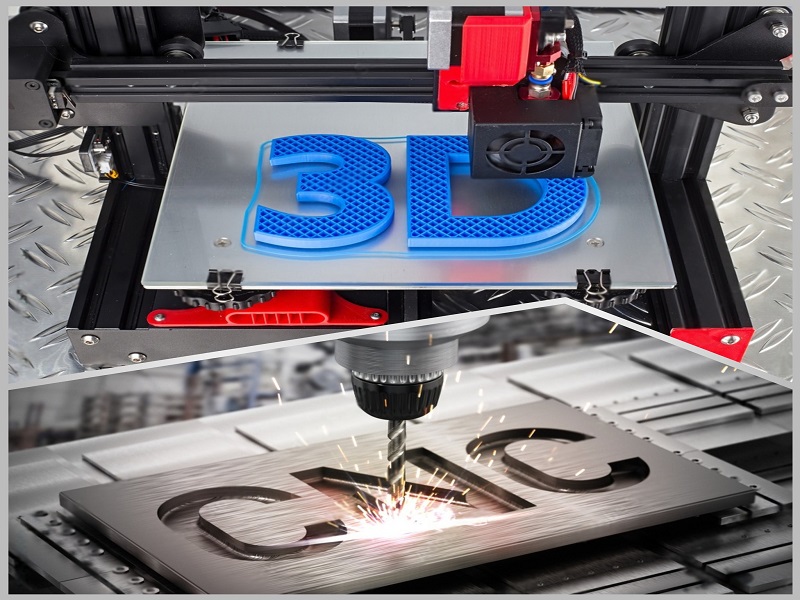

Manufacturing Technologies Uncovered: 3D Printing vs. CNC Machining
In manufacturing and prototyping, 3D printing and CNC machining are two prominent technologies, each with unique characteristics.
![]() Process:
Process:
3D printing, or additive manufacturing, constructs objects by layering materials from a digital model. In contrast, CNC machining is a subtractive process that carves out parts from solid blocks of material using precision cutting tools.
![]() Applications:
Applications:
3D printing excels in producing intricate designs and custom components, benefiting industries like aerospace, automotive, healthcare, consumer products, and education. CNC machining is favored for high-strength, durable parts in sectors such as aerospace, automotive, industrial machinery, electronics, and defense.
![]() Materials:
Materials:
While 3D printing offers a growing range of materials, including plastics and metals, CNC machining works with a broader selection, such as metal alloys and composites.
![]() Accuracy and Cost:
Accuracy and Cost:
CNC machining typically delivers superior precision and surface finish, often eliminating the need for post-processing. 3D printing can be more cost-effective for small runs, whereas CNC is faster for large productions but may incur higher setup costs.
![]() The choice between these technologies depends on your project's material requirements, precision needs, and production scale. By grasping their differences, you can make an informed decision on the best method for your designs.
The choice between these technologies depends on your project's material requirements, precision needs, and production scale. By grasping their differences, you can make an informed decision on the best method for your designs.
